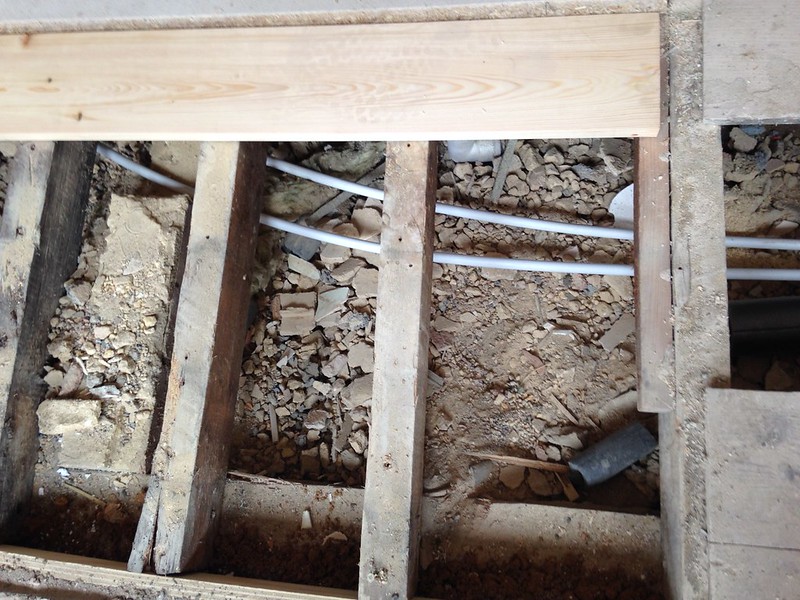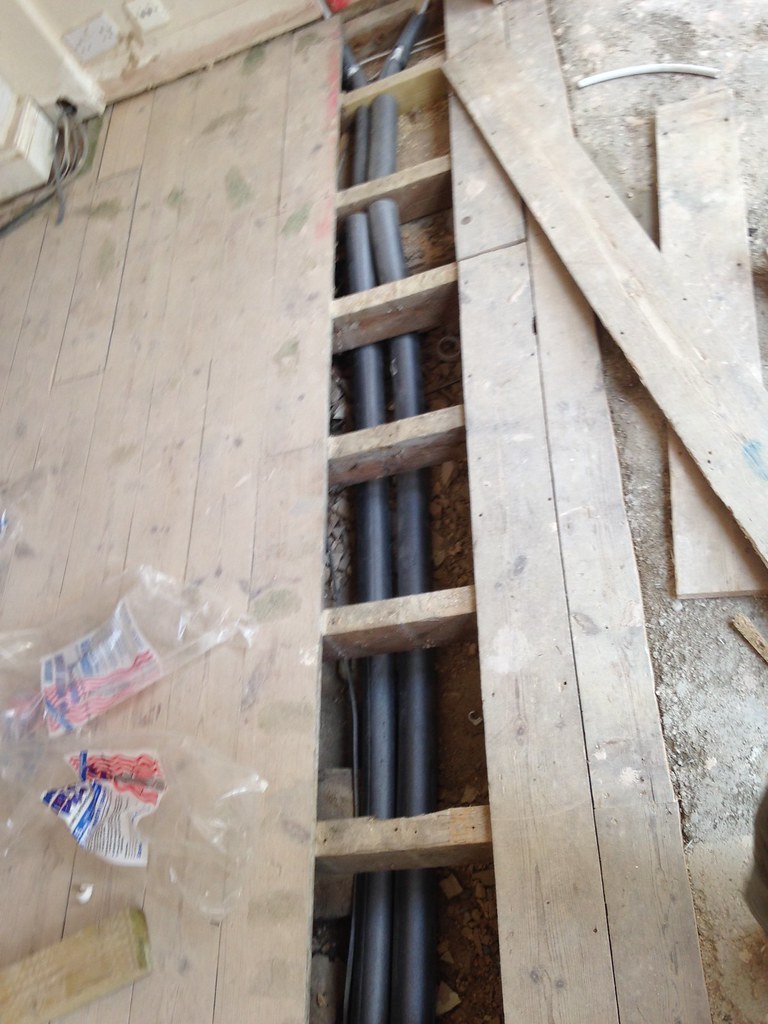- Joined
- 23 Jan 2017
- Messages
- 77
- Reaction score
- 0
- Country

Just had our CH replaced (Boiler, rads, pipes - the works) in our house which has a suspended timber floor. After this was done, we had insulation installed underfloor - Knauf wool between the joists with plastic netting stapled to the joists.
The CH engineer was supposed to lag the pipes under the floor, but he's not keen to do it now as the insulation netting is over the pipes in most places, although the pipes are below the level of the joists. He had ample time to do it before the insulation went in.
As he has used plastic barrier pipe I understand that the heat loss won't be huge, but there will still be some heat loss. I'd say the chances of pipes freezing are remote, but I paid the guy to lag the pipes, so I believe he should do them.
Heating engineer says that there is only a 7 degree difference between the flow and return to the boiler, and lagging the pipes will make this even lower - I am told the ideal figure should be about 11 degrees.
Anyway, my thinking is that I don't want to be losing heat in the ventilated void under the floor!
I would be interested in your opinions on this.
The CH engineer was supposed to lag the pipes under the floor, but he's not keen to do it now as the insulation netting is over the pipes in most places, although the pipes are below the level of the joists. He had ample time to do it before the insulation went in.
As he has used plastic barrier pipe I understand that the heat loss won't be huge, but there will still be some heat loss. I'd say the chances of pipes freezing are remote, but I paid the guy to lag the pipes, so I believe he should do them.
Heating engineer says that there is only a 7 degree difference between the flow and return to the boiler, and lagging the pipes will make this even lower - I am told the ideal figure should be about 11 degrees.
Anyway, my thinking is that I don't want to be losing heat in the ventilated void under the floor!
I would be interested in your opinions on this.


